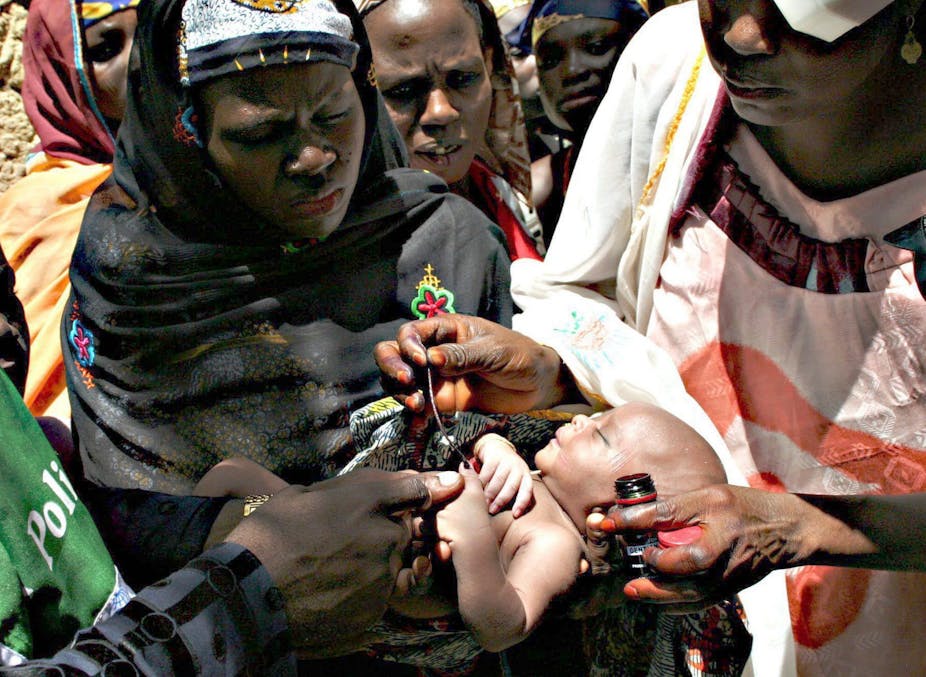The Lancet, one of most prestigious medical journals in the world recently published a series of five papers on “the new decade of vaccines”.
These were followed by a sixth paper – A call to action for the new decade of vaccines – of which I was privileged to be one of the authors.
Masterminded by Professor Richard Moxon of Oxford University, and strongly supported by the editor of The Lancet, Richard Horton, the series involved many of the leading figures in the world of vaccines.
The issue was timed to come out just before a major international pledging meeting in London on 13 June organised by the Global Alliance for Vaccines and Immunisation (GAVI).
The aid agencies of wealthy countries, together with foundations, United Nations agencies and non-governmental organisations came together at the meeting in support of immunisation programmes in poor countries.
An amazing $4.3 billion was pledged at the GAVI meeting.
The first key message of the series is that the challenges ahead are more than just scientific: while vaccines have proven themselves to be history’s most cost-effective public health tools, and while scientific advances over the next decade will likely result in powerful new vaccines, societal factors may well constrain beneficial global effects.
It is centrally important to understand that, in contrast to most pharmaceutical products, vaccines are given to healthy people so safety is paramount.
We haven’t done a good enough job in communicating that serious adverse events are exceedingly rare. Or that the risk-benefit equation is overwhelmingly positive, particularly in developing countries.
At the same time, for diseases where nature itself doesn’t provide solid immunity, such as HIV/AIDS or malaria, there are still some significant technical hurdles to overcome.
The nature of vaccines
For much of its history, vaccine research has had a large empirical component. This means that it has been based on observation and experience, rather than on logic or theory.
This is true for both live, attenuated vaccines, such as the measles vaccine or the Sabin oral poliomyelitis vaccine, and non-living vaccines, such as those against whooping cough or tetanus.
The former uses a relative of the real pathogen that has had its teeth drawn but is sufficiently close in its make-up to evoke an immune response that then “spills over” to the virulent micro-organism.
The latter uses molecules from the pathogen (technically known as antigens) which, when attacked by antibody molecules, cripple the organism bearing the relevant antigen.
But candidate antigens for new vaccines are now being designed much more deliberately. For example, in a technique known as reverse vaccinology or genome mining, researchers sequence the whole genome of the pathogen, revealing every single protein it can make.
Clever computer programmes are then used to select those that look like they might be on the surface of the microbe (so it can be easily targeted) or which represent a toxin the pathogen produces to gain a foothold in the human host.
These selected proteins are then synthesised by genetic engineering technology and injected one by one into mice. The antibodies made by the mice are then tested to see whether they kill or cripple the microbe.
At the end of this process, three or four antigens might be combined into a “cocktail” vaccine.
Vaccine production methods are complex and quality control is vital. To make vaccines available on a global scale, manufacturers are increasingly entering partnerships with international public health agencies and with regulatory authorities.
In some cases, they’re being subsidised by funding bodies so the final price is one developing countries can afford.
But in crisis situations, such as the looming possibility of a global influenza pandemic, industry is not yet ready to speedily produce the billions of doses needed, and priorities have to be set to achieve the maximum public health benefit.
Clearly this is a sensitive and fraught area. So it’s good to see that vaccine manufacturers in developing countries are rapidly gearing up their manufacturing capability, particularly in India, Brazil, Indonesia and China. They frequently manage to achieve a lower final cost than industrialised country manufacturers.
Predictably, though, financing remains a limiting factor.
The fight against infectious diseases
The Global Alliance for Vaccines and Immunization (GAVI), a partnership between the World Health Organization, UNICEF, The World Bank, the Bill and Melinda Gates Foundation and others, is at the forefront of filling the funding gap.
One of GAVI’s key stratagems is to insist on some co-payment by the developing country itself. Frequently, developing countries give low priority to health within their own budgets, and this must be rectified.
Public trust and confidence in vaccines remain crucial. The mix of psychological, socio-cultural and political factors that underlies vaccine acceptance needs to be better understood.
This is a separate, worthwhile field of research: it is vital that scientists don’t sweep uncertainty and risk under the carpet.
Engagement with all stakeholders needs to be open and transparent. So, the call to action has four key components.
The first is intensified research and development for crucial vaccines we still lack.
One can foresee about 20 improved or novel vaccines on the horizon, so there’s no shame in seeking the requisite research funds, especially for expensive clinical trials.
The second is a sustained advocacy effort at the highest level, both to mobilise the donor community (and what a beginning was made on 13 June) and to restore and enhance public confidence.
The third is to foster a sense of ownership of immunisation programmes within developing countries, both within local communities and at governmental level.
Finally, there has to be accurate and widespread measurement of the benefits of vaccine campaigns, which, when broadly communicated, sets the stage for further action.
The GAVI Alliance may well turn out to be the most important global public health campaign ever. Properly sustained, it could well spell the end for infectious diseases as major killers of children.

